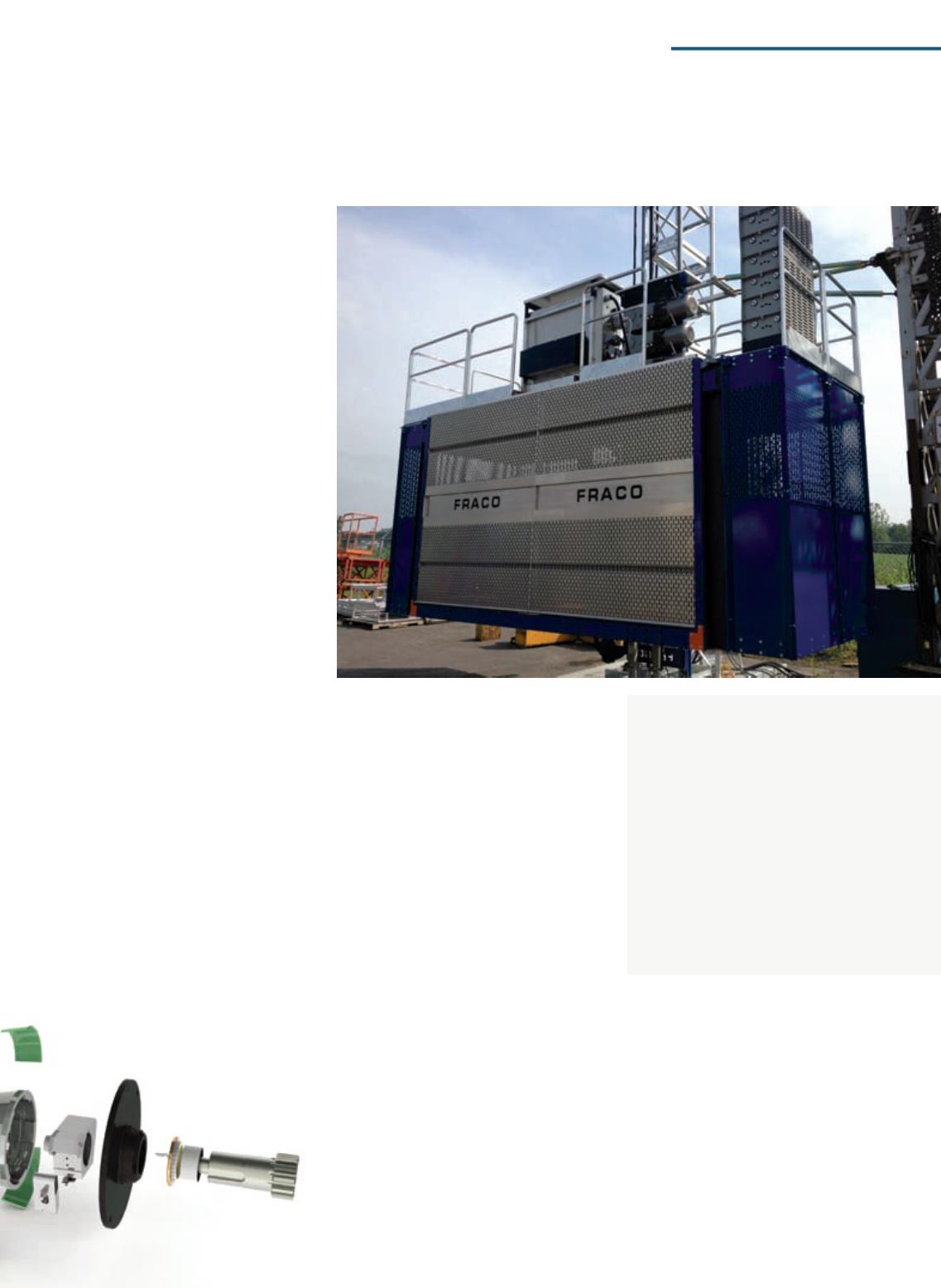
29
NOVEMBER-DECEMBER 2013
ALH
MAST AND HOIST SUPPLEMENT
CONSTRUCTION HOISTS
feature on the onstruction hoist, resulting in less
wear and noise and to ensure good operation,
a motor protection plate should be installed on
top of the machinery to protect the motors and
lubrication device.
Safety first
Construction elevators should offer overload
protection devices and Variable Frequency
Converter (VFC) control as standard features.
The control system should consists of three
stainless steel electrical panels: AL0 in the
base enclosure for incoming power; AS1 with
Programmable Logic Controller (PLC) located
inside the car for operator’s control; and AS2
main control panel with frequency inverter on
the cage roof. All control systems should be
equipped with an overload digital display, a VFC
and a drop test remote control for safe drop test
executions during installation. A manual joystick
operator control (MJOC) should be a standard
with a relay based control system.
The safety device must be ANSI certified
and get triggered if nominal speed exceeds 20
percent, in case of power and engine brake
failure. The safety device is positioned inside the
car and operates independently of the hoist’s
braking system. In case of 20 percent over
speed, the centrifugal force engages the over
speed brake discs, bringing the car to a smooth
and immediate stop.
Because of the power required to lift up to
7,000 pounds, the safety device uses a module
eight pinion. It also runs with two separate
pinions that distribute forces from the main
pinion in case of tripping. The operator’s control
panel with the overload digital display has
a right or left hand location, while the ANSI-
approved safety device has a centered location.
For more on controls, see our box story.
Ground enclosure
In best case scenarios, ground enclosures
should be built-in modules of perforated
steel sections that can be bolted together. A
modular design makes it easier to install and
to adapt variable hoist sizes as well as twin
car installations. The enclosure door is a two-
wing steel door, compliant with applicable
regulations. The enclosure
door is both mechanically
and electrically interlocked
construction hoist
making it impossible to enter the enclosure
when the car is not in place at ground level. Next
to the enclosure door is a fixed stainless steel
electrical switchboard. The zinc-rich powder
coated base frame comes with individually
adapted buffers for the weight and speed of the
car according to the regulations. Enclosures
should be prepared for an easy conversion from
single to twin and right to left hand.
Mast sections and wall ties
There are a few different options when it comes
to mast sections for the construction hoist. A
26-inch by 26-inch by 60-inch mast section will
have strong construction due to its wide cross
beams, which minimizes turning and twisting
movements that can be common among heavy
duty hoists. This type of mast construction
enables high-reaching installations and can be
erected to a lifting height of up to 1,310 feet.
Another option is to configure the mast section
as follows: 26 inches by 35 inches by 60
inches. This type of mast will be needed when a
counterweight application is used or when extra
torsional rigidity is wanted or needed.
Some construction elevators have been
designed to simplify the jumping of a
counterweighted unit as the construction of the
building is progressing. The 26-inch by 35-inch
mast section is optimal with counterweight
units, but the standard 26-inch by 26-inch mast
can still be used. Counterweighted hoists can
increase their speed to 330-feet per minute.
Other benefits of the counterweight system
include: Smaller motors and VLC and electrical
components; less power consumption and fuse;
and less wear on rollers, cog wheels and more. )
(See above for examples of energy savings.)
Hoists can have telescopic and turnbuckle wall
ties that offer flexibility, adjustment possibilities
and the ability for the unit to be single or twin
car. Lastly, cable trolleys travel underneath the
hoist, directly on the mast section. Easy and
quickly installed, they do not require trolley
guide rails along the mast section.
■
SAVING ENERGY
– AND MONEY
Here are more examples of counterweight
energy savings with a
hoist carrying 6,000 pounds at a speed
of 0-295 feet per minute:
■
Unit without counterweight needs
2x 22 kW gear motors and 75 kW inverter
(125 Amps)
■
Counterweighted unit needs 2x 18.5 kW
gear motors and a 55 kW inverter
(100 Amps).
Up in Montreal, Fraco supplied nine units
of its SEH Series for the construction of
the new University of Montreal Health
Center (UMHC).


